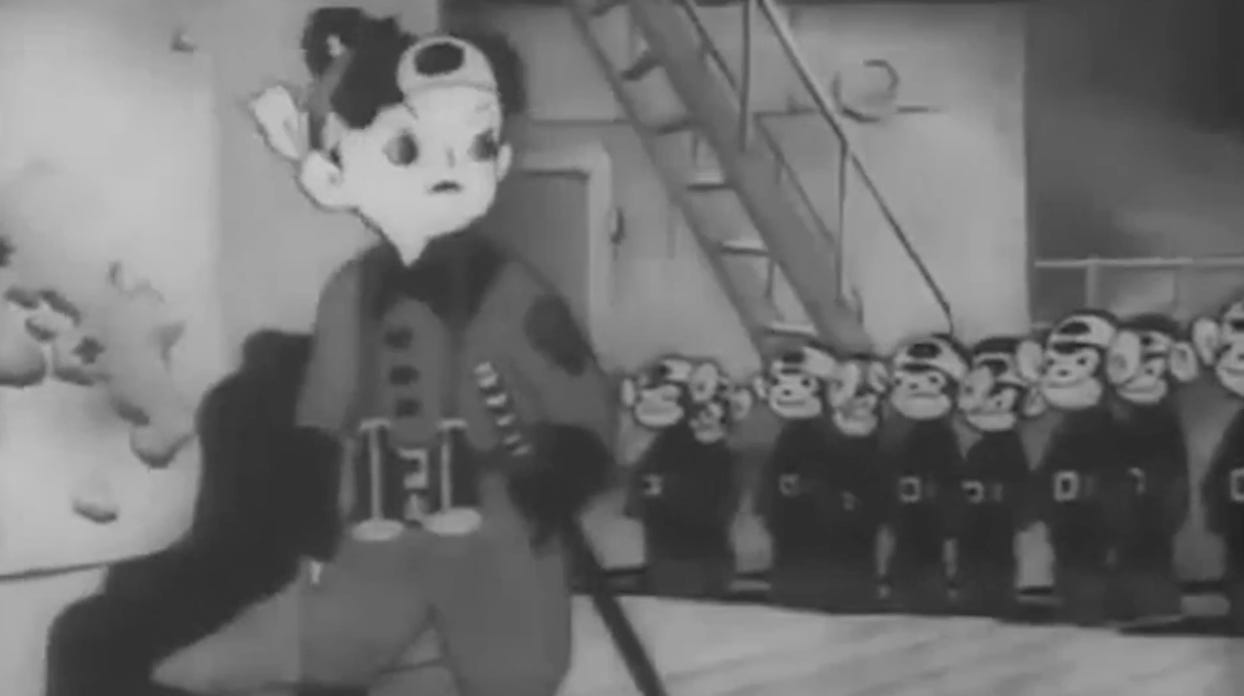Before getting stuck into this week’s post, I’m hoping that you can spare me two minutes of your time.
Next month, I’ll be launching an Instagram channel whose purpose, alongside this newsletter, is to offer expert and entertaining context and commentary on all the things people know, love or wonder about Japan.
I’m hoping to carve out more dedicated time each month for these two endeavours by exchanging some of my freelance writing for a paid tier on Substack, which will run alongside a free tier. The challenge - and this is where I’d like to beg a little help - is to know what sorts of content people would most like to see, in exchange for £3.50 per month (the lowest monthly fee that Substack allows me to set).
To that end, please click HERE for a short poll: 3 questions, no sign-in required, and of course no obligation ever to become a paid subscriber yourself.
Thank you!
This week marks 80 years since Trinity: the successful testing by the United States of an atomic weapon. I wrote HERE about Robert Oppenheimer’s links with India, and about Japan’s fantasies of creating their own super-weapon.
The sheer national confidence on display in those latter fantasies seems extraordinary given what we know about how the war ended. But you can see them on display elsewhere during the conflict - perhaps nowhere more vividly than in one of the first ever feature-length animations made in Japan.
Momotarō no Umiwashi (Momotarō’s Sea Eagles) was released in cinemas in 1943, as a collaboration between the animation studio Geijutsu Eigasha and the Imperial Japanese Navy.
The film’s main character would have been instantly recognisable to Japanese viewers as the folk hero Momotarō. He was born from a peach and gathered together a group of friends to fight a band of ogres who were terrorizing the local population.
Momotarō, by Tsukioka Yoshitoshi
In Momotarō’s Sea Eagles, Momotarō is reinvented as a naval commander.
His task is to oversee an attack on ‘Demon Island’ - a thinly-veiled reference to Pearl Harbor.
Momotarō, his loyal underlings and a map of ‘Demon Island.’
The story serves as an allegory for the Pan-Asian brotherhood which Japan’s leaders insisted they were leading against the West - as opposed to colonising their neighbours.
A peace-loving country is menaced by (western) ogres. So a special young man strikes out to find and defeat them, acquiring a diverse - and biddable - set of comrades along the way.
In case the Pearl Harbor references were a bit subtle for some cinema-goers in Japan, the film features an American sailor, based on a particularly portly Bluto from the Popeye films.
He guzzles from a bottle and then flops around on the deck of his ship as wave after wave of rabbits, monkeys and assorted other animals sporting rising sun bandanas pilot attack planes in the direction of his fleet.
The attack is a devastating success, and after various heroics the friends find themselves back at HQ, celebrating their victory.
Above: a suspiciously familiar-looking American flounders in the face of attack.
Below: key moments from the film
Momotarō’s Sea Eagles was followed in 1945 by Momotarō’s Divine Sea Warriors. Having trudged through bombed-out cities on their way to the cinema, viewers were less taken with the film’s propaganda message than they might have been two years before. But as technical achievements, these two films were remarkable.
One young viewer, sat in a cinema in Osaka, vowed that he would one day make these sorts of films for a living. That boy was Osamu Tezuka, who went on to become Japan’s ‘godfather of manga.’ He made some of the first manga and anime to travel west from Japan, helping to turn wartime technology into soft power of an extraordinarily successful kind.
Osamu Tezuka and one of his finest creations: Tetsuwan Atomu, better known in the West as ‘Astro Boy.’
Thank you for reading! If you enjoyed this post, please ‘like’, share and subscribe.
And if you have two minutes to click HERE for my short survey, I’d appreciate it very much.
Finally, if you’d like to watch Momotarō’s Sea Eagles in full, here it is:







Wow, so interesting, thanks. Did you make the subtitled preview that came up first in Notes?
you call this "one of the first" anime. Which was the first?